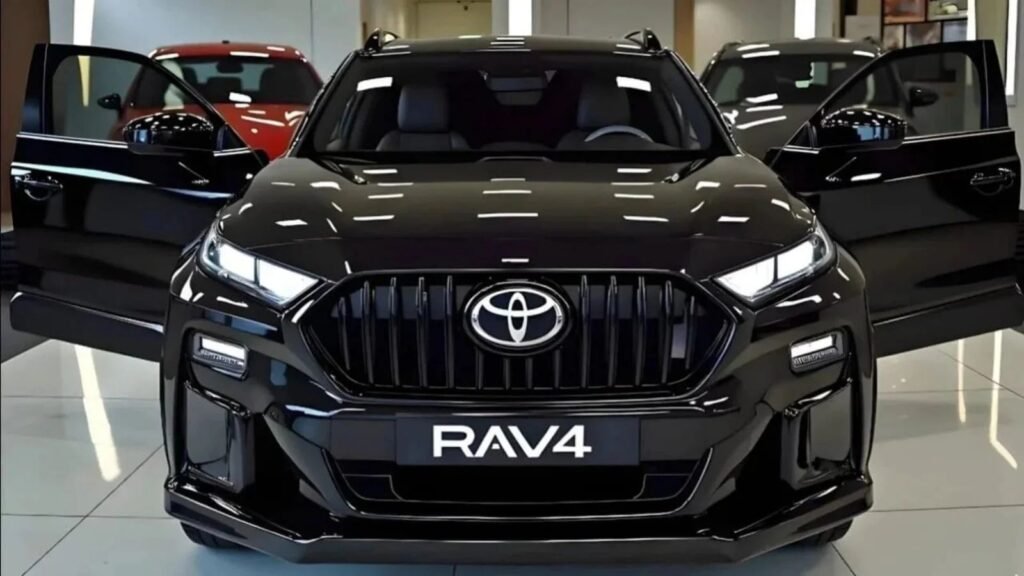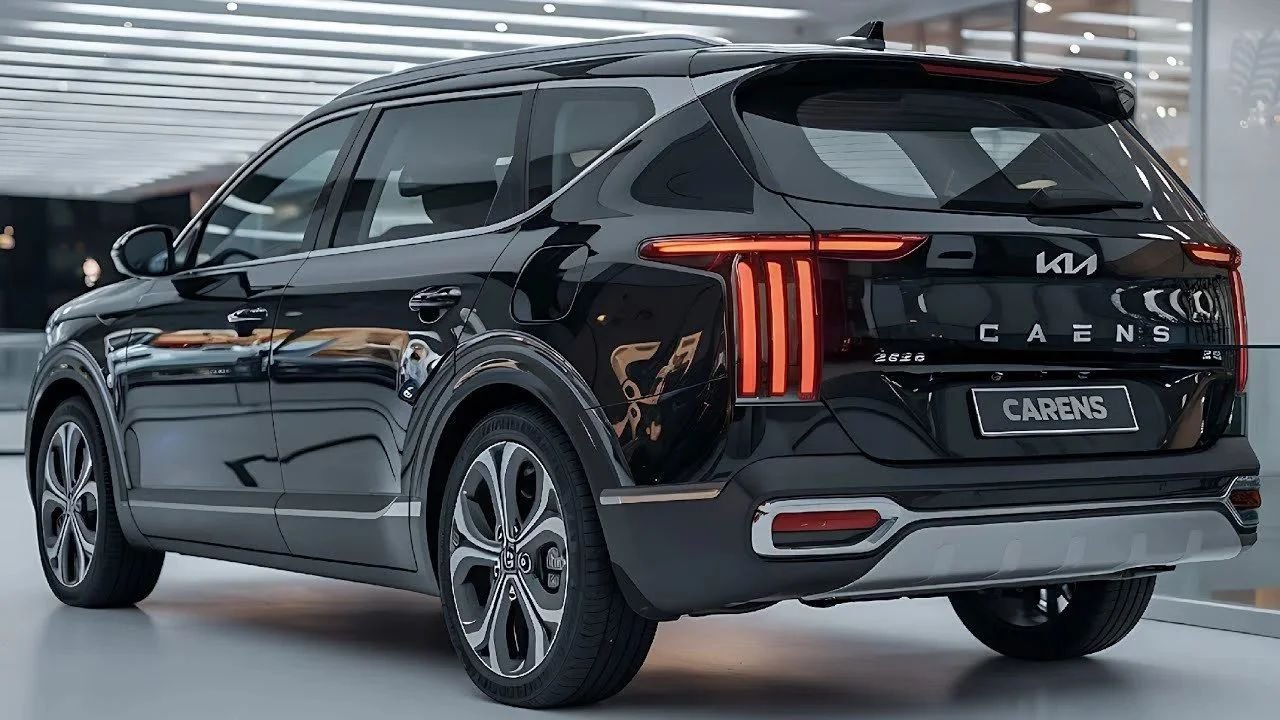The Toyota RAV4 2025 marks the next evolution in Toyota’s best-selling compact SUV line. Already respected for blending utility, reliability, and comfort, the 2025 edition raises the bar by introducing refined styling, more efficient hybrid powertrains, advanced software-driven systems, and enhanced interior comfort. Whether navigating city streets or cruising scenic routes, the Toyota RAV4 2025 is positioned to satisfy drivers who demand both practicality and sophistication.
In this deep dive, we’ll start with a product overview, then explore its design (exterior & interior), mileage, features, specifications, and anticipated pricing. We will also compare it with rivals, outline which buyers might gravitate to it, and assess its market prospects. Let’s go in order.
Product Overview
The Toyota RAV4 2025 is built on Toyota’s TNGA-K platform, refined with structural enhancements and the latest software architecture. It comes in multiple drivetrains: a conventionally powered 2.5 L gasoline engine, a hybrid variant, and a plug-in hybrid (PHEV) version in many markets. The 2025 model also introduces a new software stack (Toyota’s Arene platform) to underpin infotainment, safety, and vehicle system updates. (Notably, Toyota revealed that the revamped RAV4 introduces Arene software to enable more advanced features.)
Some key placement aspects:
- A stronger emphasis on electrification (hybrid / plug-in hybrid)
- More connected and software-driven capability (OTA updates, voice agent, etc.)
- Balanced focus on both daily usability and weekend adventures
- Trim differentiation across “Core”, “Sport”, and “Rugged / Woodland” themes
- Pricing that targets premium SUV buyers without exceeding value thresholds
Below is a summary comparing the major powertrain options in the 2025 RAV4:
| Variant Type | Powertrain / Output | Drivetrain Options | Strengths |
|---|---|---|---|
| Gasoline | 2.5 L 4-cylinder, ~203 hp, 184 lb-ft torque | FWD / AWD | Simpler, conventional option, reliable baseline |
| Hybrid | 2.5 L + electric motors | AWD / FWD (depending on market) | Superior fuel efficiency, smoother transitions |
| Plug-in Hybrid (PHEV) | Gas + electric prime system | Usually AWD | Electric-only range, stronger output, and flexibility |
The Toyota RAV4 2025 aims to satisfy both new buyers seeking greener options and traditional SUV drivers valuing utility and performance.
Design
Exterior
On the outside, the Toyota RAV4 2025 adopts sharper, more modern design language while retaining the toughness that RAV4 owners expect. Its visual cues reflect a balance of refined style and ruggedness.
Exterior highlights include:
- A larger, bold grille with more aggressive mesh or vertical slat styling
- Sleeker LED headlamps with DRLs that integrate smoothly into the body lines
- Stronger, defined creases along the hood, sides, and fenders to evoke muscle
- Wheel arches with cladding and available 18–20 inch alloy wheels in various finishes
- Distinct trim themes: “Core” for everyday style, “Rugged/Woodland” for off-road cues, “Sport / GR Sport” for aggressive accents
- Roof rails, shark-fin antenna, and subtle spoilers and underbody protection
- At the rear: wraparound LED taillights, sculpted bumper, optional dual exhaust tips, and functional rear tailgate geometry
Though the 2025 RAV4 carries over some dimensional traits from prior generations, reinforced structures, stiffer subframes, and extra spot welding boost rigidity and NVH (noise, vibration, harshness) control.
Interior
Stepping into the Toyota RAV4 2025, one encounters a more modern and refined cabin, where utility and luxury blend seamlessly.
Expected interior features and upgrades:
- Cleaner horizontal dashboard layout with minimal clutter
- Flat surfaces, layered textures, and soft-touch materials in key zones
- A large central display (e.g. 10.5-inch or upgradable) for infotainment, paired with a digital instrument cluster
- Physical knobs and buttons for climate and key functions to retain usability
- Ambient lighting, contrast stitching, and trim accents (e.g., metallic or wood-like inserts)
- Comfortable, supportive seats — available in cloth, SofTex, or leatherette / leather in premium trims
- Rear-seat comfort with adequate legroom, headroom, and large windows for visibility
- Flexible cargo area with folding seats, underfloor storage, and tie-down points
- USB-C ports, wireless charging pad, and accessible connectivity for all passengers
The cabin aims to be roomy yet cozy, with a balance between everyday usability and a sense of premium quality.
Mileage
Fuel efficiency is a major selling point for the Toyota RAV4 2025, especially in its hybrid variants.
From published data:
- The non-hybrid gasoline 2025 RAV4 offers approximately 27 mpg city / 35 mpg highway (FWD) in U.S. testing. In AWD trims, expect somewhat lower figures. (Estimates from multiple sources)
- The RAV4 Hybrid earns up to 41 mpg city / 38 mpg highway / ~40 mpg combined, a significant jump over the gas-only model.
- In mixed driving, many sources rate the hybrid at about 39 mpg combined in real-world conditions.
- The 2025 RAV4 PHEV (Plug-in Hybrid) variant, when available in your market, offers electric-only range plus hybrid efficiency, making it appealing for daily commutes with low fuel usage.
Thus, a buyer inclined toward reducing fuel cost and emissions will likely favor the hybrid or PHEV variant of the Toyota RAV4 2025, while the gas model remains a solid fallback.
Features
The Toyota RAV4 2025 features list is competitive and focused on delivering both utility and modern convenience. Toyota is leveraging its new software architecture to push connected features forward.
Infotainment & Connectivity
- Standard touchscreen display (generally 10.5 inches in many trims), optionally larger screens in premium trims
- Wireless Apple CarPlay and Android Auto
- Toyota’s new Arene software platform, enabling OTA (over-the-air) updates, voice assistant integration, and advanced system upgrades
- Digital instrument cluster (size varies by trim)
- Multiple USB-C ports and wireless charging
- Navigation, in-car apps, and connected services (remote start, status, diagnostics)
Comfort & Convenience
- Keyless entry and push-button start
- Dual-zone automatic climate control (some markets)
- Power-adjustable driver (and sometimes passenger) seat with memory
- Heated and ventilated front seats (in higher trims)
- Ambient interior lighting
- Rear-seat vents and climate comfort
- Roof rails, cargo hooks, and practical storage design
Safety & Driver Assistance
Toyota equips the RAV4 2025 with an upgraded safety suite, often under the Toyota Safety Sense umbrella, plus enhancements:
- Adaptive Cruise Control with stop-and-go functionality
- Lane Departure Warning, Lane Keep Assist, and Lane Change Assist
- Pre-Collision System with pedestrian/cyclist detection
- Blind-spot monitoring, Rear Cross-Traffic Alert
- Vehicle Stability Control, Traction Control, ABS with EBD
- Road Sign Assist / Recognition
- Rearview camera, parking sensors
- Reinforced body structure, enhanced crash zones
In many markets, features such as front cross-traffic alert, predictive curve speed control, or additional lane-change assist get introduced via OTA software upgrades in the 2025/2026 window.
Specifications
Here’s a table summarizing confirmed / widely published specifications for the Toyota RAV4 2025:
| Specification | Value / Range |
|---|---|
| Engine (Gasoline) | 2.5 L 4-cylinder “Dynamic Force” |
| Horsepower (Gas) | ~203 hp |
| Torque (Gas) | ~184 lb-ft |
| Transmission | 8-speed automatic (electronically controlled) |
| Drivetrain | FWD standard, AWD optional |
| RAV4 Hybrid Output | ~219 net combined horsepower |
| Fuel Efficiency (Gas) | ~27 mpg city / 35 mpg highway (FWD) |
| Fuel Efficiency (Hybrid) | ~41 mpg city / 38 mpg highway |
| Seating Capacity | 5 passengers |
| Cargo Volume | ~37.5 cu ft behind rear seats (approx.) |
| Curb Weight | ~3,500+ lbs depending on trim |
| Warranty | Standard new vehicle warranties typical of Toyota |
These specs underscore the balance the Toyota RAV4 2025 strikes between performance and economy.
Price
Pricing for the Toyota RAV4 2025 varies by region, trim, and powertrain, but here are representative figures:
- Base RAV4 gas trims often begin around US$28,850 in U.S. markets
- Mid-level/XLE trims escalate toward US$33,000+
- With hybrid or AWD features, top trims may push into the US$38,000–$42,000+ range
In many non-U.S. markets, taxes, duties, and localization will modify the price significantly. For example, the hybrid model tends to carry a premium over the conventional gas version because of the additional electrified components.
Market Context & Competitor Comparison
Market Trends
The compact / compact-plus SUV segment remains one of the hottest in global auto markets. Buyers increasingly expect hybridization, robust safety, and strong connectivity features. Meanwhile, more SUVs are being defined by software capability and over-the-air updates rather than just mechanical upgrades.
Toyota is pushing in that direction with its Arene software stack, making the Toyota RAV4 2025 one of its first steps into more software-defined vehicles.
Key Competitors
Here are some main rivals and how Toyota RAV4 2025 stacks up:
- Honda CR-V (2025 / upcoming variants)
The CR-V is a perennial competitor; the RAV4’s stronger hybrid powertrain and software features may give it an edge, while CR-V competes with comfort and interior ergonomics. - Hyundai Tucson / Kia Sportage (hybrid / PHEV variants)
These models push innovation, styling, and feature content. The RAV4 must match or exceed in reliability, software updates, and brand trust. - Ford Escape / Ford Kuga (in some markets)
Known for balanced driving dynamics and variants, the Escape presents competition especially in hybrid/plug-in forms. - Mazda CX-50 / CX-5
Mazda trades more on driving feel and premium touches; the RAV4 counters with efficiency, software, and long-term durability. - Subaru Forester / Toyota’s own Corolla Cross / other compact SUVs
In markets where ruggedness or AWD is prioritized, the RAV4’s hybrid AWD may appeal strongly.
The Toyota RAV4 2025 can excel by combining software, hybrid efficiency, and Toyota’s brand strength against feature-loaded rivals.
Possible Buyer Profiles
- Efficient Commuter
A buyer who wants strong fuel economy, especially in day-to-day city use, but also desires SUV practicality for occasional trips. - Feature-Conscious Professionals
Demanding connectivity, OTA updates, modern infotainment, and comfort in daily drives — the software upgrades in RAV4 2025 appeal to them. - Family SUV Seekers
Those needing space, safety, and utility with occasional weekend trips or outdoor escapes. - Tech Enthusiasts
Buyers who like to future-proof their vehicle with software-driven features, voice agents, and regular updates. - Hybrid / Green Buyers
Buyers focused on reducing emissions and operating cost, but unwilling to commit to full EVs — thus hybrid or plug-in versions of Toyota RAV4 2025 are attractive.
These profiles indicate that RAV4 2025 is meant to bridge multiple use cases, rather than being narrow in appeal.
Sales Potential & Risks
Strengths & Opportunities
- Strong Brand Equity: RAV4 is a veteran nameplate with solid reputation.
- Hybrid Momentum: As hybrid and electrified vehicles gain traction, RAV4’s variants are well-timed.
- Software-Led Differentiation: Arene platform and OTA features can set it apart from rivals.
- Broader Appeal: It covers both utility and premium niches, giving upsell opportunities.
- Global Footprint: It is suited to many markets (North America, Asia, Europe) with localization.
Risks & Challenges
- Price Sensitivity: Premium features may push cost upward, making rivals tempting alternatives.
- Complexity & Maintenance: Hybrid and software complexity may raise service costs or consumer concerns.
- Internal Overlap: Toyota’s own SUV models (e.g. Corolla Cross, Highlander, etc.) may compete in overlapping segments.
- Competitor Pressure: Rivals are pushing aggressively in features and EV space.
- Adoption & Execution: If OTA updates or software features lag or malfunction, consumer trust could suffer.
If Toyota executes on reliability, software quality, competitive pricing, and after-sales support, the Toyota RAV4 2025 has strong sales potential in its segment.
Conclusion
The Toyota RAV4 2025 represents a refined, more technologically empowered version of one of the world’s most trusted compact SUVs. By combining stronger design language, advanced hybrid and plug-in drivetrain options, and a modern software backbone, Toyota positions this model to compete in a new era of SUVs that are as much about software and efficiency as about size and capability.
Whether you’re commuting in traffic, taking the family out on a road trip, or simply seeking peace of mind in safety and comfort, the Toyota RAV4 2025 offers a compelling mix of performance, utility, and future readiness. For SUV buyers who want a balance of value, innovation, and reliability, the Toyota RAV4 2025 is a leading contender.
Some Important Link
| Download News APP | Click Here |
| WhatsApp Group | Click Here |
| Home Page | Click Here |





